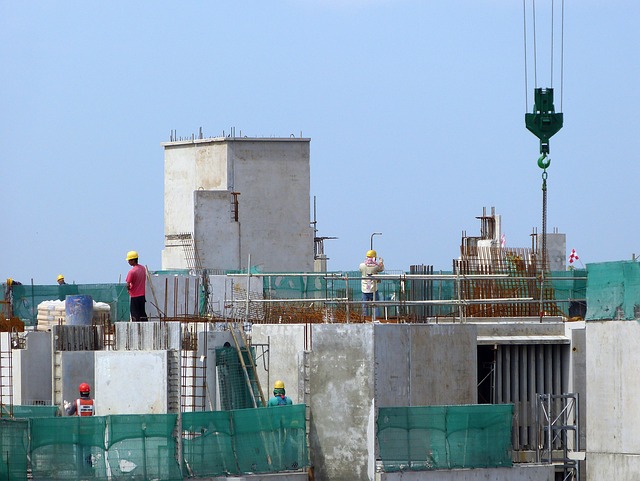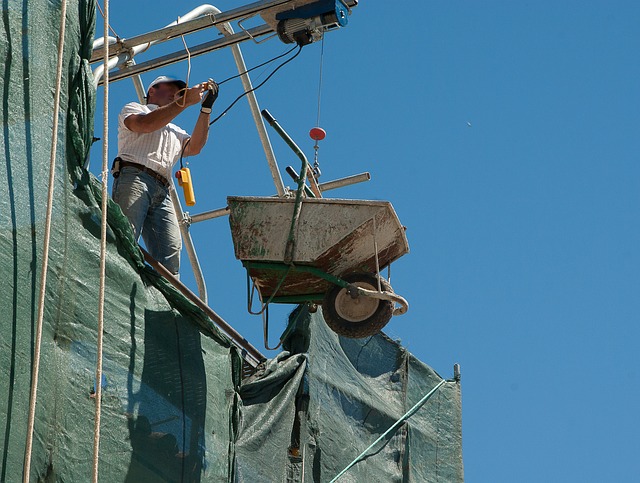Debris netting
Debris netting is used on construction sites to contain debris and on scaffolding to prevent debris from falling. It is generally made from a durable, heavy-duty, plastic netting.
The Work and Height Regulations 2005 required that where public access to a potential danger areas is necessary, then debris netting must be used to catch falling materials, including dust which can cause discomfort or eye injuries. Risk assessments must be carried out to determine the safety measures that need to be installed.
There are a number of benefits to using debris netting on a construction scaffold:
- It provides safe containment of debris, protection of workers, the public and traffic.
- Its versatility as an enclosure system means it is easy and economical to handle and can hang vertically or horizontally to achieve maximum coverage.
- The edges are reinforced with eyelets for quick and easy attachment to a scaffold using wire or plastic ties.
- It allows air movement, which can ventilate the scaffold and reduce wind loading.
- It provides shading against bright sunlight whilst allowing enough light in for tasks to be carried out.
- It gives some protection to work areas and workers from inclement weather conditions.
- It is flame retardant..
Debris netting can be made of a range of materials such as:
- Polyester.
- High-density polyethylene.
- Polypropylene.
- PVC-coated polyester.
Debris netting is typically green in colour. However, in sensitive of high profile locations, debris containment can be provided using printed materials that can for example show the façade of the building behind the material, images of the completed development, details of the project team or client, advertisements and so on. For more information see: Building wraps.
[edit] Find out more
[edit] Related articles on Designing Buildings Wiki
Featured articles and news
CIOB report; a blueprint for SDGs and the built environment
Pairing the Sustainable Development Goals with projects.
Latest Build UK Building Safety Regime explainer published
Key elements in one short, now updated document.
UKGBC launch the UK Climate Resilience Roadmap
First guidance of its kind on direct climate impacts for the built environment and how it can adapt.
CLC Health, Safety and Wellbeing Strategy 2025
Launched by the Minister for Industry to look at fatalities on site, improving mental health and other issues.
One of the most impressive Victorian architects. Book review.
Common Assessment Standard now with building safety
New CAS update now includes mandatory building safety questions.
RTPI leader to become new CIOB Chief Executive Officer
Dr Victoria Hills MRTPI, FICE to take over after Caroline Gumble’s departure.
Social and affordable housing, a long term plan for delivery
The “Delivering a Decade of Renewal for Social and Affordable Housing” strategy sets out future path.
A change to adoptive architecture
Effects of global weather warming on architectural detailing, material choice and human interaction.
The proposed publicly owned and backed subsidiary of Homes England, to facilitate new homes.
How big is the problem and what can we do to mitigate the effects?
Overheating guidance and tools for building designers
A number of cool guides to help with the heat.
The UK's Modern Industrial Strategy: A 10 year plan
Previous consultation criticism, current key elements and general support with some persisting reservations.
Building Safety Regulator reforms
New roles, new staff and a new fast track service pave the way for a single construction regulator.
Architectural Technologist CPDs and Communications
CIAT CPD… and how you can do it!
Cooling centres and cool spaces
Managing extreme heat in cities by directing the public to places for heat stress relief and water sources.
Winter gardens: A brief history and warm variations
Extending the season with glass in different forms and terms.
Restoring Great Yarmouth's Winter Gardens
Transforming one of the least sustainable constructions imaginable.


























